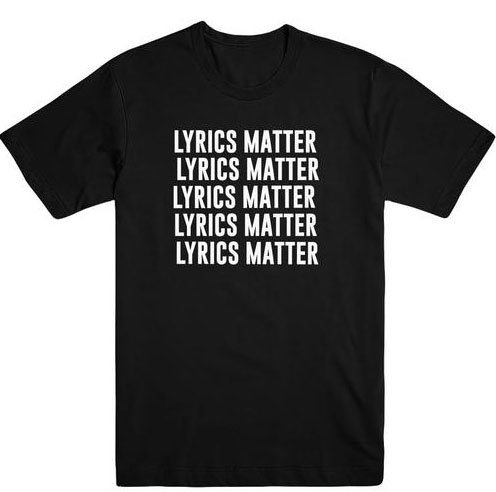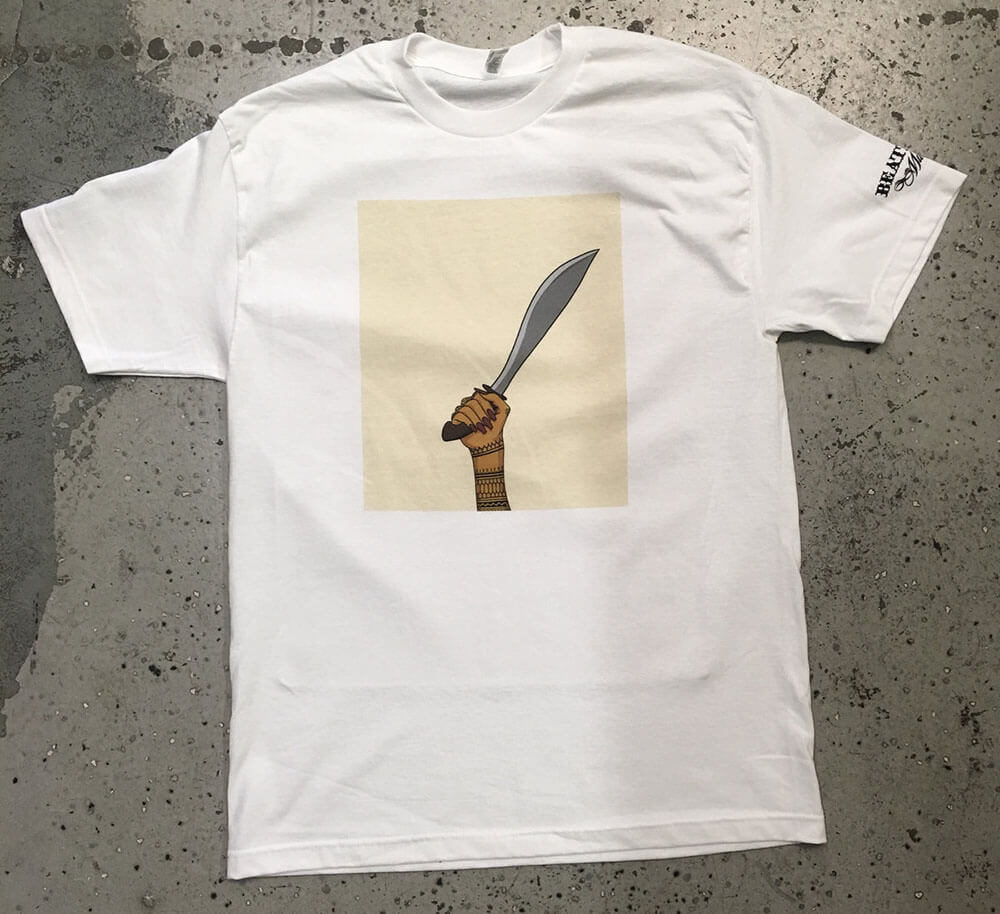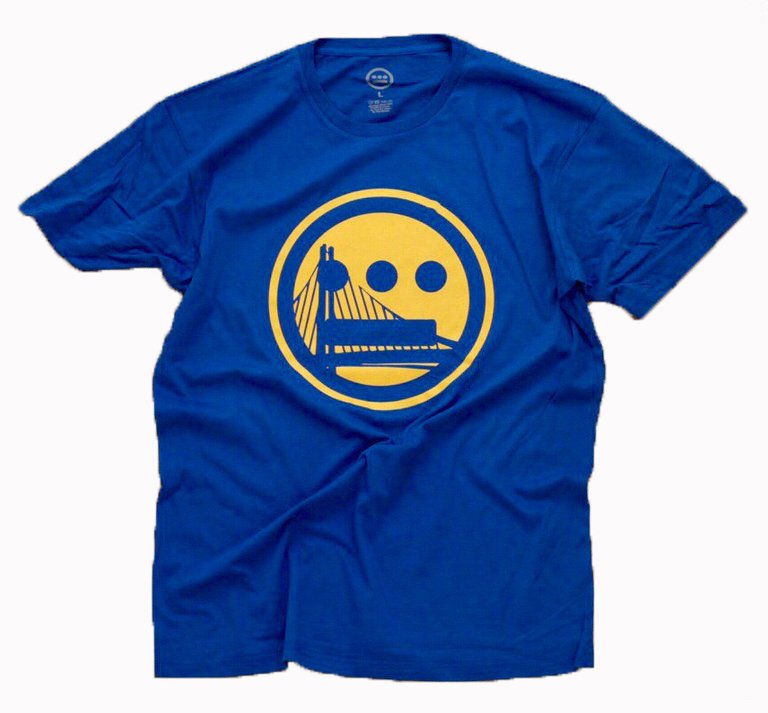
This is part 1 of 4 in my Merch for Musicians series.
In our music streaming world, it has become much harder for independent artists to sustain a career in the music industry. Selling CDs was a large income stream that has basically vanished. To put into context how important it was, consider how much you make from music streaming.
Based on the latest numbers, to make the profit of selling one $15 CD, you would have to get roughly 3,200 streams on Spotify or 2,000 streams on Apple Music. For emerging artists, it’s a challenge just to get 1,000 streams.
It’s safe to say now that selling merch is basically a necessity now to make it as an artist on top of doing shows and tours.
Often times, the problem with merch is you need money to make money. Since the money to fund merch will most likely come out of your own pocket, you can’t afford to make items that people won’t buy.
Before you go and print a bunch of shirts with your face on it, it’s important to take a step back to evaluate your brand, what you represent and what characteristics define you as an artist.
I want to shed light on this topic, not as someone who has designed tons of merch for musicians, but as a fan who has bought a lot of merch and looks at it from a sociological perspective. I will be working on helping the artists I work with on merch so I will be incorporating any new insights as I go along.
Why do people buy merch?
First, we need to establish why people buy merch from artists in the first place. If you want to make stuff people will buy, you should know why they would buy them.
Support – You can look at it as a symbolic, economic and social gesture of support for the artist. We basically vote with our money so buying something is saying “Hey, I like what you do and I want more of it.”
Memento – Buying something could serve as a souvenir or memento, especially from a live show.
Expression – Merch is a medium to express/communicate to others their values and beliefs through your brand. Wearing your band tee could be to make a statement or send a signal about their identity.
Belonging – As social animals, humans have an innate need to belong and be a part of a group, community or tribe. Merch can be used by fans as a way of signaling membership or inclusion of an artist’s fan base.
Design – It could just be something that looks cool with no other deeper symbolic meaning. Some people will just buy things based on how it looks aesthetically.
Collect – There’s a lot of people out there who collect different things. When it comes to music, it’s usually CDs or vinyl. However, I like to collect band tees, music posters and even artist stickers. Making merch that is more collectable is a great way to build fan loyalty.
Gift – Merch could be bought to be used as a gift for someone.
By understanding the reasons why people buy merch, you can create items that are optimal for those needs.
Despite the fact that people don’t buy CDs as often as before, they make perfect items (along with a poster) for fans to have signed at the merch booth. Although I don’t use CDs anymore, I still bought them when I saw Lupe Fiasco at his meet and greet:
Bundling packages that offer a few items together (CD, Vinyl, Shirt, Hoodie, Hat, Stickers) for a discounted price could be great for gifts.

This was a merch bundle we sold for Eligh’s last album.
If your brand has a common theme or powerful message that resonates with your fan base, it’d be a good idea to create a tee that allows them to express that sentiment as a part of their identity. This leads to the next point.
The Importance of Branding
If you’re just starting out and haven’t made any merch yet, I think understanding your brand is foundational. Your brand should guide the merch you create.
If you’re not too sure about your brand, check out my other blogs on brand basics.
Along the same lines, you should also know who your target audience is. If you’re having trouble with that, check out this blog on identifying your niche.
The role of clothing, outside of the functional use of it, is often used as a form of communication and a tool for self-expression. This is why understanding your brand and target audience is so important to creating good merch.
If your brand revolves around political opposition and social justice like Immortal Technique or Dead Prez, you know what messages, symbols, colors and themes are going to resonate with your fans when it comes to merch.
If you tend to attract more female fans as a male artist, it’s going to affect the type of cut for the tees you make. If your music resonates more with people who live in colder climates, you may want to make things that are warmer to wear like, a hoodie or even a scarf.
Merch can also be a medium to express our personal identity, your brand, and associated symbols. More specifically, wearing a certain artist or band name can signify membership in a certain group or subculture.
We all have our in-groups or tribes we identify with. They can be as general as being a male or female to specific subcultures like religion, ethnic groups, cannabis culture or being a vegan. As an independent artist, you have to think about what groups you represent. This is because you want to attract those types of people using specific characteristics, designs or symbols in the merch.
In a more broad sense, some people like to wear more popular brands because it has more recognition, which symbolically communicates the inclusion of a certain group. Wearing a lesser-known brand could communicate a sense of individuality or being more distinguishable because it is not as recognizable.
You can also create your own group down the line. Logic has his RattPack, a term he calls his entourage and fan base. Through this expression of his brand, he has created merch around that niche.
The purpose of developing a brand, within the context of merch, is to attract those who are more likely to resonate with you as an artist by sending out the right signals. It helps your audience feel a deeper emotional connection to you. Humans are social animals that are naturally tribalistic so leveraging your brand through merch is a great way to make things that sell.
For some artists, this is not as easy to figure out. However, not all merch has to exactly be on brand all the time. There are different approaches, discussed next. However, for independent artists thinking about merch for the first time, this can be a good starting point.
How should you go about merch design?
When you develop designs for merch, there are some general approaches you can take.
Your Logo – This is probably the most common starting design artists go with. Part of being a brand is having something like your logo consistently used to develop that reputation or perception. People use their face or some physical attribute that stands out, like the eyes, eyebrows or hair.
Here’s the logo for Run the Jewels:

Artistic Variation / Remix – This is often some artistic variation of the logo. Sometimes your logo changes up a bit for each album campaign. It could be a cool redesign based on a theme, collaboration or concept.
In this case, this could be a Halloween concept. Not the best example, but usually Run the Jewels makes really cool redesigns and variations, in my opinion.
Brand / Message – As mentioned earlier, design more focused on the brand or message to attract a specific group or demographic.
This Zion I tee is a great example of communicating a brand message that resonates with a segment of independent or underground hip hop:
Here’s another example of an on-brand design from Ruby Ibarra. As a Filipino American hip hop artist who immigrated from the Philippines, her branding resonates with others like her. The bolo knife design serves as a symbol for colonial resistance and revolution based on Filipino history..
Album / Campaigns – This approach appears to be even more common now. It makes a lot of sense since it is an opportunity to create new designs that you can monetize from. Releasing a new album is an excellent time to generate merch because you can leverage the attention from the new music. Sometimes it could just be the name of the album, the picture of the album cover or designs revolving around the theme of the project.
This Logic shirt promoted both the album and an important brand theme he communicates through his music. The idea was for inclusion of “everybody” as well as not discriminating against others based on race, sex, religion, ethnicity and sexual orientation.
Russ used the album cover in his merch for his latest album:
Individual Songs – Creating merch around a hit song is a great way to leverage that attention and popularity into another income stream.
Here’s an example of a song turning into a tee. Hobo Johnson’s big break was the song Peach Scone which they created a tee and hat for:
Events / Milestone / Tour – It could be an event or milestone in your career, such as a tour run. Often, these are designs that are a limited run, so it can feel a bit more special.
Local Influence/ Sports – This expands on the artist variation mentioned earlier. I’ve seen merch promote the city an artist is from, or something local, like a sports team. This is an example of of the iconic underground hip hop logo for Hieroglyphics redesigned with the Golden State Warriors logo and color.
Common Merch Items to Consider Starting with
I think we’ve all been to a show at some point in our lives and should know this. There are the tried and true staples of merch, which makes sense to start with:
- Tees
- Hoodies
- Stickers
- Posters
- CDs
CDs are cheap enough. If you get a couple hundred, it should cost you about $2 each so charging $10 is a $8 profit. Especially as an independent who is fairly new, it could be good to sell as a novelty item you can sign, as opposed to something people will actually use.
An alternative is a USB drive with your music on it and some branding imprinted on it. The great thing about it is, it can be reused. You’re not limited to MP3s either, so you can even include cool photos and videos. It’s something we’ve been considering doing.
The downside is you can’t really sign it and people don’t really mess with MP3s either since streaming took over. It’s also pricier compared to things like CDs.
If your brand is along the same lines as Snoop Dogg, Wiz Khalifa or Cypress Hill (cannabis culture), you know that brand lighters or anything related to smoking marijuana is going to be good merch to make. The main point here is, know your audience!
Tip: Get your fans involved
It should be no surprise that if you want to sell merch your fans will buy, you should ask for their feedback. You’re never going to satisfy everyone, but ask them, poll them, let them vote. It’s always a win when you can get your supporters involved, and make them feel like they have a say in your career. Not only items but the designs and even colors. You can also run a contest with your fans for designs.
Need help coming up with a design?
If you’re not able to create designs yourself and you don’t have access to a graphic designer, a service I would recommend trying is 99designs (Affiliate Link Disclosure). It’s a platform that helps find freelance designers for your project. For example, if you need a shirt design, they can help you find a designer to work with 1-on-1 or you can host a design contest.
The design contest is what makes 99designs cool because you can have over 20 designers submit their ideas and concepts for you to choose from. The person with the winning design you decide on is the only one that gets paid. If you don’t like any designs submitted, you can get 100% money-back (for non-guaranteed contests).
They are an affiliate so I do get a small commission if you try them out by clicking my link at no extra cost to you. Using my affiliate links are a great way to support this blog with services that I can vouch for and would use myself. I have an artist I work with who used them a couple of times for cover art designs. In the near future, I will be using 99designs myself for a shirt design I plan on selling on my website.
What Next?
This is the end of part 1. In the next blog of this merch series, I will dive into tips on how to order merch and things should know about the process.
Music Merchandise Design: Thought + Process – This course was created specifically for graphic designers who want to specialize in music merch, since the instructor does exactly that for the band Twenty One Pilots. It goes in-depth through the design process from the beginning to the final design. Even if you’re a musician who is not going to be creating the designs, I believe this course is still very useful for you to understand what the merch designing process should entail. Plus, it may give you some ideas.
The Staples of Branding: From Purpose to Product – This course is made for people who want to start their own clothing brand. Musicians may not think of creating band merch as making your own clothing brand, but it essentially is. You’ll learn the foundations of creating a brand and how to transfer that into physical products.
D4’s Merch For Musicians Blog Series
– Part 1: What Merch Should Independent Artists Make That Fans Will Actually Buy
– Part 2: Bulk Ordering Or Print On-Demand? What’s The Best Way For Musicians To Order Merch
– Part 3: How Musicians Can Maximize Merch Sales At In Person Shows
– Part 4: How Musicians Can Maximize Merch Sales Online (Coming Soon)


















How do I get the attention of fans quickly
Not sure if you mean get attention for new fans or current fans, but I’ll assume it’s to get new fans. Make either really good music that people naturally want to share. Generate some controversy, intentionally or unintentionally (Lil Nas X, Hobo Johnson, Rich Brian, Post Malone). Create something unique and different that goes viral. Pay to get exposure from influencers or placement in popular playlists. Trolling by doing something extreme (not advised).
That’s basically your options. Everyone wants things to happen quickly, but most don’t want to put the time, energy and money to being a successful artist. At the end of the day, you’re still going to need to make a “good” song. Unless you become super famous for something totally not related to music then use that platform and audience to make music. An example is Bhad Bhabie who became famous for saying the catchphrase “cash me outside, how ’bout dat” on Dr Phil.